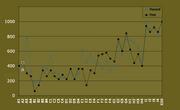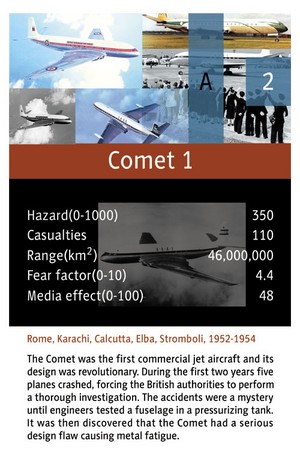|

Building on the lead jet engine technology after World War II, the de Havilland DH106 Comet was launched as the first commercial jet aircraft in 1949. Because the Comet represented such a breakthrough in commercial travel it was put through extensive test flights. Having successfully passed these tests the Comet attained permission for commercial flights in 1952. The problems began just one year later, when a Comet mysteriously crashed shortly after take-off. Two similar crashes in 1954 forced the British authorities to perform a thorough investigation.
The accidents were incomprehensible to the technicians until a fuselage was submerged into a water tank and repeatedly pressurised and depressurised to represent take-off and landing. After thousands of tests it showed that the metal would suffer from fatigue cracks, starting from the passenger windows and rapidly growing to a critical size where they would destroy an aircraft in flight.
During the first decade, six aircrafts crashed due to this technical flaw, killing 110 people. The Comets were re-designed, but in the meantime new airline companies such as Boeing had taken over the market. The Comet, though, did provide valuable lessons for later aircraft design.
Comment this page
 
Links and references:
A whole homepage dedicated to Comet:
http://www.geocities.com/CapeCanaveral/Lab/8803/co...
|

|
|



